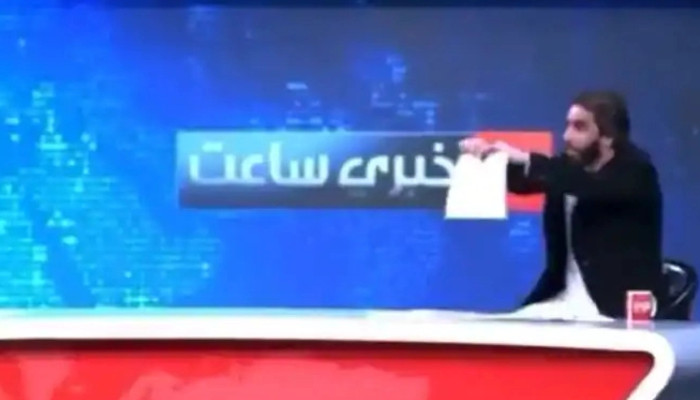South Korean President Yoon Seok-yeol has stressed that the drone invasion of North Korea is an unacceptable incident and that for peace we must prepare for an overwhelming war. The United Nations Command has launched an investigation into the violation of South Korean airspace by North Korean drones. Journalist Kim Hwan-yong reports from Seoul.
South Korean President Yoon Seok-yeol said: “The invasion of North Korean drones into the airspace is an accident that cannot be tolerated.”
Lee Jae-myeong, deputy spokesman for the Korean president’s office, said in a written briefing that President Yoon visited the Daejeon Defense Science Research Institute (ADD) on the 29th and said so.
President Yoon said, “Only severe punishment and retaliation for acts that violate freedom can discourage provocations.”
He also said, “Review the overall response system for all flying objects invading South Korean airspace, as well as North Korean drones, and promptly remedy the deficiencies.”
In particular, President Yoon stressed, “To achieve peace, we must prepare for a war that is overwhelmingly superior.”
On the 26th, after five North Korean drones invaded South Korean airspace and some penetrated over Seoul, President Yoon ordered strong countermeasures every day, sending high-intensity warning messages to North Korea.
Previously, on the 28th, in a meeting with the presidential staff, he had ordered “to punish and react with certainty against any provocation from North Korea” and “neither fear nor hesitate that North Korea has nuclear weapons”.
The Defense Science Research Institute is a national research institute under the Ministry of Defense of the Republic of Korea that engages in the investigation, research, development and testing of weapons and defense science and technology.
Dr. Park Hyeong-joong of the Korea Institute for National Unification, a national research institute under the South Korean government, said it was a response to President Yoon’s series of warnings as North Korea’s provocations level was escalating to to the point of invading South Korean territory.
[녹취: 박형중 박사] “From the South Korean government’s point of view, there is no choice but to expect North Korea to step up its conventional provocations step by step. If North Korea crosses the road again, there will be a greater response.
North Korea has launched armed provocations with unprecedented frequency this year, including firing some 60 ballistic missiles over 30 times, including intercontinental ballistic missiles (ICBMs).
At the same time, there were air force demonstrations with fighters and bombers and bombing raids against the maritime buffer zone, where it was decided to suspend military actions due to the 9.19 inter-Korean military agreement.
Experts predict that North Korea will diversify its provocations with so-called “grey zone” strategies as well as high-intensity provocations such as nuclear weapons and missiles in the winter season when mobility is low, starting with this drone provocation.
The “gray zone” strategy is a method of directly attacking the opponent or gradually disrupting the opponent’s interior into a state where the provocation is not clear.
Park Won-gon, a professor of North Korean studies at Ewha Womans University, said, “As seen in this case where South Korean Air Force planes were sent to several unmanned aerial vehicles and aircraft operations were temporarily suspended, it may be a low-cost and high-efficiency method of provocation for North Korea”.
[녹취: 박원곤 교수] “North Korea has also flown drones like this and is not talking about anything right now. For example, a military camouflage like a civilian or something like that is one of the gray area strategies. So for North Korea, this is a very beneficial way to achieve their goals.”
For this reason, there are observations that North Korea will challenge the South Korean military’s response posture in the future by provoking a “gray area” similar to the provocation of a cyber attack or a wooden ship mine in the past .
Kim Hyung-seok, former deputy minister for unification of South Korea, has diagnosed that North Korea is showcasing its various capabilities that can neutralize South Korea’s defense network and threaten it.
[녹취: 김형석 전 차관] “Isn’t this to induce a change of attitude towards North Korea within the Republic of Korea? That is, there are many such intentions to cause disagreement and conflict within the Republic of Korea with the message that the Republic of Korea should change its strong policy towards North Korea”.
In the midst of this, the United Nations Command launched an investigation into the violation of South Korean airspace by a North Korean drone.
In a statement released on the 29th, the UNC said, “We are aware of reports that North Korean drones have crossed the Military Demarcation Line (MDL)” and “a special investigation team has been formed.”
The investigation is expected to be conducted not only in North Korea, but also in South Korea, which has started reconnaissance activities by flying three drones north of the military demarcation line (MDL) in response to North Korea’s drone provocation .
Given that the UNC has been investigating violations of the Armistice Agreement between the two Koreas, it is noted that it will investigate violations by both sides.
The South Korean Ministry of National Defense said the contents of the South Korean drone operation north of the military demarcation line were shared with the United Nations command.
Jeon Ha-kyu, spokesman for the Ministry of National Defense, explained in a regular briefing, “We were sharing UNC-related information on this issue” when asked about the UNC’s response to the South Korean drone operation.
South Korean military authorities are said to be in the position that the UNC approval process is unnecessary because the South Korean drone operation is a self-defense measure against North Korean provocation.
Meanwhile, the South Korean military held a joint air defense exercise on the 29th, assuming a provocation with North Korean drones.
The Joint Chiefs of Staff announced that Joint Chiefs of Staff Chairman Kim Seung-gyeom conducted training to respond and destroy small enemy drones in the Kanap-ri area of Gyeonggi-do, with the participation of the Ground Operations Command, each corps , the Air Force Operations Command and the Army Aviation Command.
Approximately 20 manned and unmanned forces, including the Air Force KA-1 Tactical Controller, Apache and Cobra attack helicopters, participated in the training, which was conducted to establish the concept of countermeasures against small unmanned aerial vehicles of class 2m and to master practical operations procedures.
This is VOA News’ Kim Hwan-yong from Seoul.


